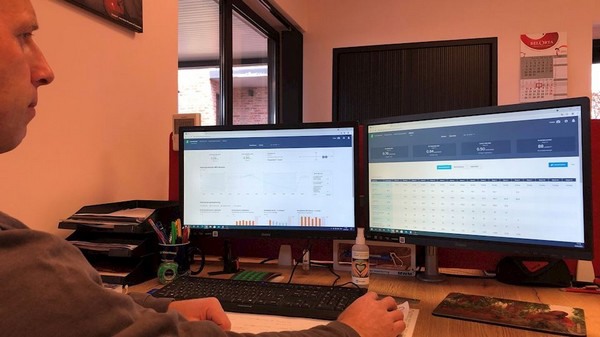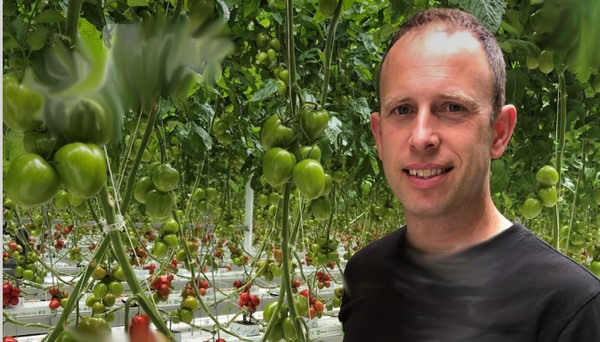Belgian tomato grower Kris De Weerdt has been working together with Grodan for two decades. Since the beginning of 2021, he has been using Grodan’s e-Gro software platform to gain even deeper insights as the basis for precision growing.
Kris De Weerdt and his wife founded Krikato in 2001 when they bought an existing 1 ha beef tomato production business based in Onze-Lieve-Vrouw-Waver, close to the Belgian city of Mechelen. A decade later, they demolished their old greenhouse and replaced it with a 1.6 ha high-tech facility. They continued producing beef tomatoes until 2017 when they switched to truss tomatoes instead. “Our sorting machine had reached the end of its useful life, so we had to decide whether to replace it or invest in something different. Truss tomatoes are easier to automate and offer a more future-proof solution, so we went for that option,” says Kris. The company has expanded again since then, adding an extra 1.4 ha in 2020, and currently employs nine people plus seasonal workers.

To offer a year-round supply of tomatoes on the vine, Krikato produces two main varieties: Speedax (Elite) en Vivolia RZ (Ruby Red). The young tomato plants are sourced from a local nursery and placed in the greenhouse at the end of December when they are 60 days old. The first trusses are harvested in early March. The company’s tomatoes are then shipped to a local auction, from where they are exported worldwide.
20-year relationship
Kris has been working with Grodan since 2001. “We grow everything on the Grotop Master Dry,” he states. The dual-layer structure of the GT Master Dry creates uniform distribution of WC, EC and roots, offering a wide control range. This makes it the ideal substrate for growers who want to use water management to control plant growth and maximize crop production – which is exactly what Kris wants to do.

To support his precision-growing approach, Kris decided to implement Grodan’s e-Gro solution at the start of 2021. The software platform supports a grower’s knowledge, experience and growing strategy with insights and recommendations based on data about the root zone, climate, crop and harvesting.
Logical step
“I was really curious to learn more about the software because it enables you to access lots of relevant data really quickly. We were already using sensors to continuously monitor the water content, EC and temperature in the substrate, so it was a logical step to add the data from the climate computer and our manual crop measurements too,” explains Kris.
Forecasts
“Right now, it’s interesting to keep track of the week-on-week crop growth,” he continues. “And from next year onwards, we’ll be able to compare our performance with the previous year and see what worked well and what didn’t. Plus as we build up the historical data, the system will be able to make harvest forecasts, so we’ll have a clearer view of what we will be able to harvest in the weeks ahead.
Extra reassurance
One of the biggest advantages of e-Gro so far is that it provides extra reassurance, according to Kris: “As a grower, you notice things and draw conclusions as you walk through the greenhouse, such as that the crop is growing quickly or you’re steering it generatively. When you then check the data on the computer platform, it’s nice to get confirmation that your instincts are right.”
“The service we receive from Grodan is excellent,” he adds. “The system was installed really quickly, and the Grodan representative has been to visit us a couple of times to explain how it works and to help us interpret the data. Plus he is always on hand to offer advice and suggestions for ways to further improve the crop performance.”

 Grodan
Grodan